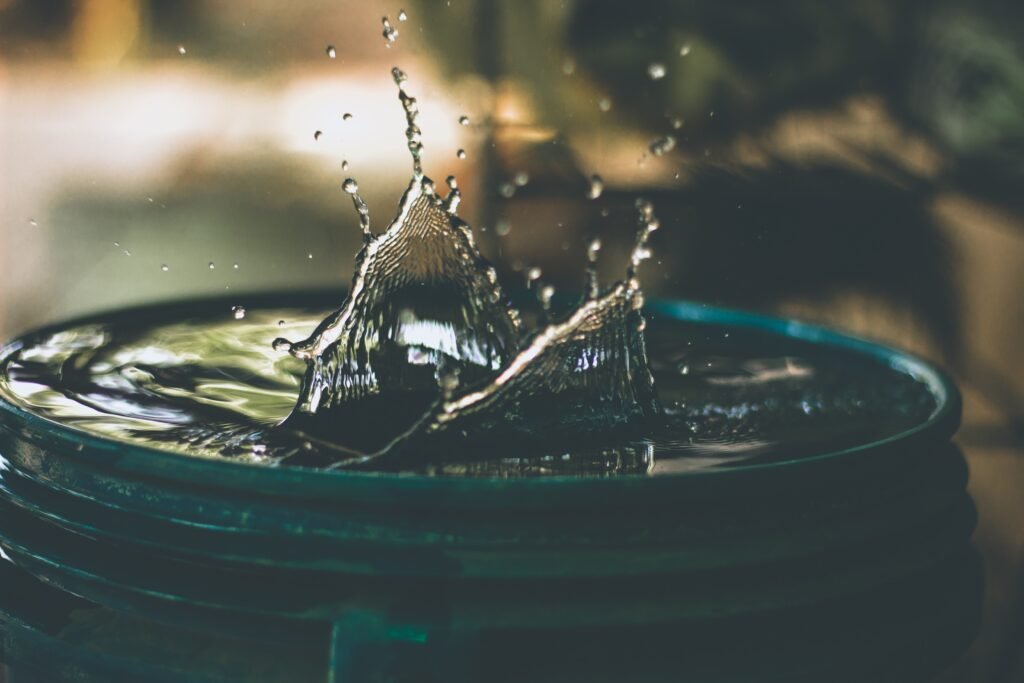If you’re a tarantula owner, you understand the importance of creating the perfect habitat for your eight-legged friend. One crucial factor to consider is providing the right humidity levels that mimic their natural environment. But how do you achieve this delicate balance? In this article, we will explore simple and effective methods to ensure your tarantula’s home maintains the optimal humidity, promoting their health and well-being. So, let’s dive right in and learn how to create a comfortable haven for your beloved tarantula!

Understanding Tarantula Habitat Requirements
When it comes to keeping a pet tarantula, providing the right environmental conditions is crucial for their health and well-being. One important aspect of tarantula care is maintaining proper humidity levels in their habitat. In this article, we will explore the factors that affect humidity, methods to measure it, and ways to create and maintain suitable humidity levels for your tarantula.
Researching Your Tarantula Species
Before delving into the specifics of tarantula humidity requirements, it’s important to research the particular species of tarantula you own or plan to own. Different tarantula species come from various habitats, ranging from deserts to tropical rainforests. Understanding your tarantula’s natural habitat is essential for providing appropriate humidity levels.
Importance of Proper Humidity
Maintaining the correct humidity in your tarantula enclosure is essential for several reasons. Tarantulas, like many other arachnids, rely on external humidity to regulate their own internal moisture levels. Incorrect humidity can lead to dehydration or respiratory issues in tarantulas, which can be fatal. Providing the right humidity also promotes a healthy molt, helps prevent stress, and supports a strong immune system.
Identifying Ideal Humidity Levels
The optimal humidity levels for tarantulas can vary depending on the species. As a general guideline, tropical species typically require higher humidity ranging from 70% to 80%, while desert species thrive in lower humidity levels around 30% to 40%. Forest species generally prefer humidity levels between 50% and 70%, while burrowing species may require more moisture, ranging from 60% to 80%.
Methods to Measure Humidity
To ensure that you are providing the ideal humidity levels for your tarantula, it is important to have reliable methods to measure it accurately. Here are some common methods you can use:
Using a Hygrometer
A hygrometer is a device specifically designed to measure humidity levels. It is an essential tool for any tarantula owner. Hygrometers come in various types, including analog and digital. Choose a reliable hygrometer and place it in your tarantula enclosure to monitor and adjust the humidity accordingly.
Homemade Solutions
If you don’t have access to a hygrometer, there are some DIY methods you can use to estimate the humidity in your tarantula habitat. For example, the “water droplet method” involves observing how quickly water droplets evaporate from the enclosure walls. Slower evaporation suggests higher humidity, while faster evaporation indicates lower humidity. While homemade methods may not be as accurate as a hygrometer, they can still provide a rough estimate.
Observing Tarantula Behavior
Another way to gauge the humidity in your tarantula enclosure is by observing your pet’s behavior. If your tarantula spends a lot of time in its water dish or retreats to a specific area, it may be an indication that the humidity levels are not ideal. However, relying solely on behavior observation may be less accurate than using a hygrometer or other measurement methods.
Factors Affecting Humidity Levels
Several factors can affect the humidity levels in your tarantula enclosure. Understanding these factors will help you make the necessary adjustments to maintain suitable humidity for your tarantula:
Ventilation and Air Circulation
Proper ventilation is essential to prevent stagnant air and excessive humidity. Adequate air circulation helps maintain a healthy environment for your tarantula. Ensure that your enclosure has proper ventilation through carefully designed vents or spaces that allow for airflow.
Substrate Choice and Moisture Retention
The type of substrate you use in your tarantula’s enclosure plays a significant role in humidity retention. Some substrates, such as peat moss or coconut fiber, hold moisture better than others. Experimenting with different substrates can help you find the one that best suits your tarantula’s humidity needs.
Water Source and Placement
The water source in your tarantula enclosure can also impact humidity levels. Placing a water dish or moist substrate near a heat source (such as a heat mat or light) can increase the rate of evaporation, thus raising the humidity. Alternatively, placing the water source away from heat sources can help maintain lower humidity levels.
Creating and Maintaining Proper Humidity Levels
Now that you understand the importance of humidity and the factors that affect it, let’s explore some methods for creating and maintaining proper humidity levels in your tarantula’s habitat:
Misting the Enclosure
Misting the enclosure with water is a simple and effective way to increase humidity. Use a spray bottle to mist the walls, substrate, and any plants or decorations in the enclosure. Be sure to avoid misting directly on your tarantula to prevent stress.
Partial Substrate Moistening
Another method to increase humidity is by partially moistening the substrate. This can be done by lightly misting the substrate or pouring a small amount of water onto it. Make sure not to oversaturate the substrate, as it can lead to excessive humidity and mold growth.
Using a Humidifier
For larger enclosures or species that require consistently high humidity, using a humidifier can be beneficial. There are various types of humidifiers available, including ultrasonic and evaporative ones. Follow the manufacturer’s instructions and monitor the humidity levels closely with a hygrometer to ensure it stays within the desired range.
Utilizing a Water Dish
A simple yet effective way to provide humidity is by using a water dish. Place a shallow dish filled with clean water in the enclosure. The evaporation from the water will help increase humidity. Monitor the water level regularly and refill as needed.
Adding Live Plants
Live plants not only provide a natural and aesthetically pleasing environment but can also contribute to the humidity levels in the enclosure. Plants release moisture through transpiration, which can help maintain a suitable humidity level. Choose plants that are safe for tarantulas and ensure they are well-maintained.

Monitoring and Adjusting Humidity
Maintaining proper humidity levels is an ongoing process. Here are some ways to monitor and adjust humidity as needed:
Regular Hygrometer Checks
Regularly check the humidity levels in your tarantula’s enclosure with a hygrometer. Make adjustments based on the readings to ensure the humidity stays within the appropriate range for your tarantula species.
Temperature and Humidity Relationship
Remember that temperature and humidity are closely related. Warmer temperatures can increase the rate of evaporation and potentially raise the humidity, while lower temperatures may decrease humidity. Adjusting the temperature within the appropriate range for your tarantula’s species can help maintain the desired humidity levels.
Modifying Ventilation and Substrate
If you find that the humidity levels are consistently too high or too low, consider adjusting the ventilation system or changing the substrate. Increasing ventilation can help lower humidity, while reducing airflow can help raise it. Experimenting with different substrates can also have a significant impact on humidity retention.
Trial and Error Approach
Finding the perfect balance of humidity for your tarantula may require some trial and error. Tarantulas’ individual preferences and environmental conditions can vary, so don’t be discouraged if it takes some time to find the right combination. Patience and careful observation are key.
Preventing Excessive Humidity
While maintaining the correct humidity is crucial, it’s equally important to prevent excessive humidity, which can lead to various issues. Here are some steps to prevent excessive humidity in your tarantula’s habitat:
Avoiding Standing Water
Be cautious not to allow standing water to accumulate in the enclosure. Excessive moisture buildup can lead to mold or fungal growth, which can be harmful to your tarantula. Regularly check the enclosure for any sources of standing water and remove them promptly.
Preventing Mold or Fungal Growth
To prevent mold or fungal growth, ensure that the enclosure is well-ventilated. Proper airflow helps reduce the likelihood of excess moisture and provides a healthier environment for your tarantula. Additionally, regularly clean and replace the substrate to minimize the potential for mold or fungal growth.
Using Proper Ventilation
As mentioned earlier, ventilation plays a vital role in maintaining the appropriate humidity levels. Adequate airflow helps prevent excessive humidity and promotes a healthy environment for your tarantula. Ensure that your enclosure has proper ventilation without creating excessive drafts.
Monitoring for Wet Substrate
Wet substrate can lead to excessive humidity levels. Regularly check the substrate for moisture content and adjust as necessary. If you notice the substrate is consistently wet, consider decreasing the amount of water you provide or switching to a substrate that offers better moisture control.

Dealing with Insufficient Humidity
In some cases, you may find that the humidity levels in your tarantula’s habitat are too low. Here are some steps to increase humidity:
Increasing Water Source and Placement
One simple way to increase humidity is by increasing the size of the water dish or adding additional water sources in the enclosure. Placing the water source closer to the heat source can also raise humidity levels due to increased evaporation.
Adjusting Substrate Moisture
If you notice that the substrate is dry, consider increasing its moisture content. Lightly mist the substrate or moisten it with a small amount of water to provide additional humidity. Monitor the humidity levels closely to prevent excessive moisture.
Introducing a Humid Hide
For tarantulas that require higher humidity levels, you can create a specific area in the enclosure with increased humidity. This can be achieved by placing a small container with moist substrate or sphagnum moss inside the enclosure. Your tarantula can retreat to this humid hide when it needs higher humidity levels.
Using Enclosed Containers
If you have difficulty maintaining sufficient humidity in an open enclosure, you can consider using enclosed containers. These containers can be modified with ventilation holes to ensure proper airflow while maintaining higher humidity levels. However, it’s important to monitor the conditions closely to prevent excessive humidity buildup.
Humidity Requirements for Various Tarantula Species
Different tarantula species have different humidity requirements due to their natural habitats. Here are some general guidelines for various tarantula species:
Tropical Species
Tropical tarantulas typically require higher humidity levels ranging from 70% to 80%. Mimicking their natural rainforest habitat is essential for their health and well-being.
Desert Species
Desert tarantulas, on the other hand, thrive in lower humidity levels around 30% to 40%. These species are adapted to arid environments and require drier conditions.
Forest Species
Forest-dwelling tarantulas generally prefer humidity levels between 50% and 70%. These species are accustomed to the moisture found in wooded areas and benefit from higher humidity.
Burrowing Species
Burrowing tarantulas often require higher humidity levels, ranging from 60% to 80%. Their subterranean lifestyle necessitates more moisture to ensure proper hydration and molting.

Dangers of Incorrect Humidity Levels
Maintaining the correct humidity levels for your tarantula is vital for their overall health and well-being. Here are some potential dangers of incorrect humidity levels:
Dehydration
Insufficient humidity can lead to dehydration in tarantulas, resulting in various health issues and potentially even death. Dehydration can affect their internal organs, respiratory system, and overall hydration balance.
Respiratory Issues
Excessive humidity can cause respiratory issues in tarantulas. High levels of moisture in the enclosure can lead to a damp environment that can result in respiratory infections or difficulty breathing.
Stress and Weakened Immune System
Incorrect humidity levels can cause stress and weaken your tarantula’s immune system. This can make them more susceptible to illnesses, infections, and overall poor health.
Molting Problems
Improper humidity levels during the molting process can be dangerous for tarantulas. Low humidity can lead to difficulties in shedding their old exoskeleton, potentially causing injuries or even death. On the other hand, excessive humidity can result in a failed molt or retained exuviae.
Conclusion
Providing the proper humidity for your tarantula’s habitat is crucial for their health and well-being. Understanding the humidity requirements of your tarantula species, monitoring and adjusting humidity levels, and taking preventive measures against excessive or insufficient humidity are essential aspects of tarantula care. By creating and maintaining suitable humidity levels, you can help ensure a comfortable and thriving environment for your pet tarantula. Remember to regularly check and adjust humidity levels using reliable measurement methods and always prioritize your tarantula’s specific needs to promote their overall health and happiness.

